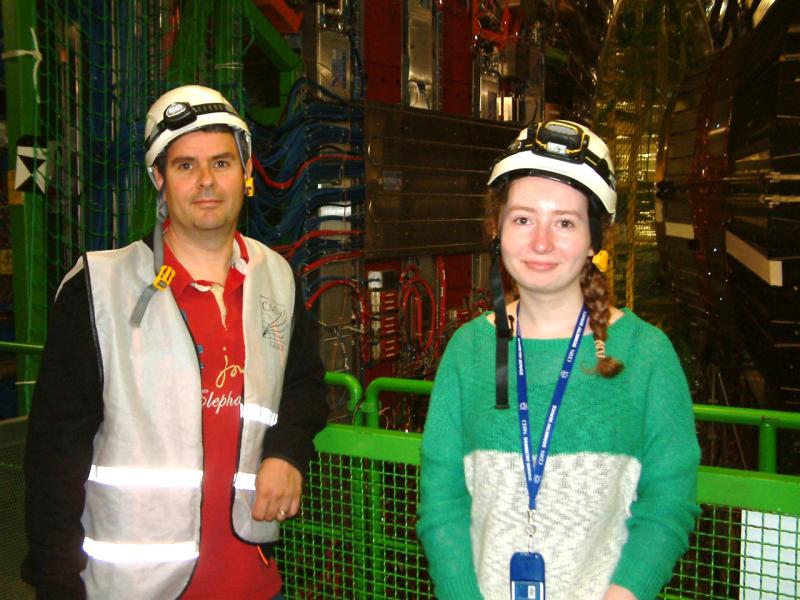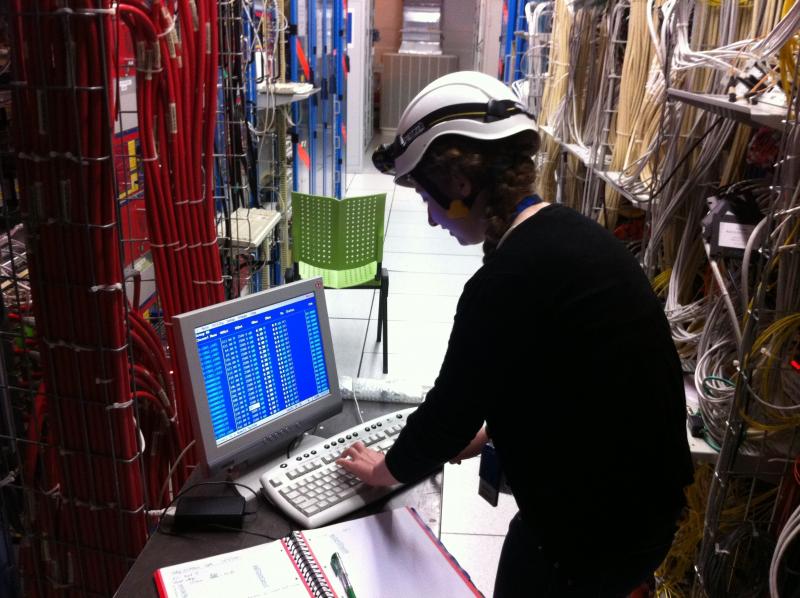Last week, I was lucky enough to spend an amazing week on work experience with Dave Barney of CMS, doing lots of real work including in the underground caverns of the detector!
My first experience when I arrived at CERN on Monday morning was to receive an official access card, which in comparison to my later experiences seems quite small; but seeing my photo next to the CERN symbol was definitely an exciting start. After this, I underwent several online training courses that were fairly rigorous, in order to gain access to underground areas. As part of my safety training I attended a practical course on using a self-rescue mask, which provides emergency oxygen in the event of gas leaks or oxygen deficiency in the underground working areas. It was actually a very fun course as, after we had a talk about how to put on the mask, we had to demonstrate our proficiency by putting it on under realistic conditions! In groups we entered a mock tunnel and, armed with our self-rescue masks, we set off pretending to work; however suddenly there was a gas leak and a cloud rose up. So we ran from the immediate danger and then had 40 seconds to correctly put on our masks. It was fairly intense, but a very good experience to have.

Visiting the CMS site itself fantastic. Dave showed me around the surface facilities and then we took a lift deep underground. At about 90 metres underground I saw the CMS detector firsthand, which was an unforgettable experience. I was awed by its size and surprised by how colourful it is! Dave explained the different layers of the detector, which was very interesting and gave me an even greater appreciation for how incredibly intricate and complex the detector is. I also learnt about building and moving the detector. It is also interesting how everything inside the detector cavern needs to be radiation resistant. I hadn’t considered this issue before, so I was impressed by how even the sticky tape and plastic ties were specially designed.

Probably the highlight of my week was when I had the amazing opportunity to do some real CMS work underground. Dave and I tested some high-voltage power modules that will be used as spares for the “Preshower” detector of CMS. We recorded the voltage limits and currents of the working module, and then we replaced it with a module that needed testing. We programmed in the recorded voltage limits then compared the currents it received. With the first module there was an immediate issue with setting the current limit. It was really interesting to watch Dave almost intuitively solve this problem. He began by only changing one thing, allowing him to be sure that what he changed was definitely the cause of the issue. It showed that a lot of figuring out problems is detective work and intuition. I was very pleased to actually contribute to the CMS detector in a practical way.

Later in the week I played around with some software used to display collisions events detected by CMS. This tool is available online for use by schools or universities for running Masterclasses and I highly recommend it. The event display shows you a view of the detector where you can add or remove different sections depending on which parts you are interested in. Then you use real data from past proton collisions and you can see tracks and energy deposits from particles such as muons and electrons, as well as “missing energy” – the signature of invisible particles such as neutrinos. You can work out the charge of the particle from the direction it is bending. The really fun part is analysing the data. It was a very fun taste of working as a physicist and provided some intriguing revelations about the inner structure of the proton.
During the week I also attended two CMS meetings; these gave me insight into how people at CERN work together. For example one person would talk about their particular project and then anyone was able to ask them questions about it, to clarify issues or even just to learn more about the project. There was open and equal communication, which was really nice to see. Everyone I spoke to during the week was friendly and welcomed any questions I had; they made sure I was able to understand explanations of the physics of CMS and their passion for their work was very infectious.
I thoroughly enjoyed my week. CERN is such a lovely, welcoming place and Dave was a great supervisor. Now I really want to come back again!
The views expressed in CMS blogs are personal views of the author and do not necessarily represent official views of the CMS collaboration.
